What to eat on your next trip to Sicily
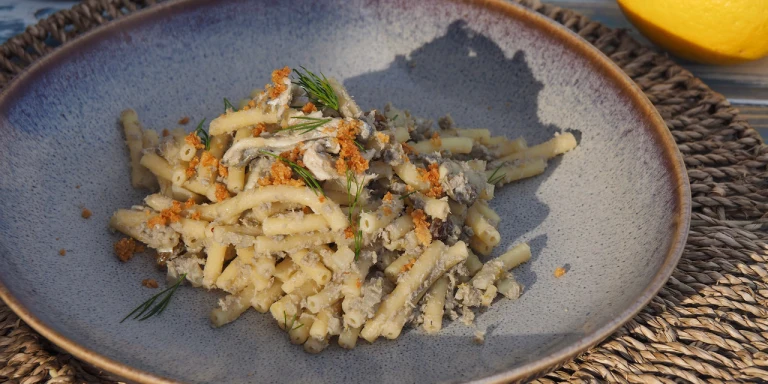
The 20 iconic local dishes to try on your next trip to Sicily
Sicily is one of the most popular destinations to visit across Italy, and perhaps across southern Europe as a whole.
There is no shortage of exciting things to do when visiting Sicily. From the beautiful pristine beaches to ancient temples and rich architecture, an incredibly picturesque landscape dominated by Mount Etna, along with lively, vibrant cities or a trip to the Aeolian Islands, Italy’s largest island will surprise and amaze you at any corner you take.
The same is true when it comes to local food.
Italy’s largest island is looking back at a culinary history second to none.
Sicily’s strategic location at the centre of the Mediterranean has put the island at the crossroads of one of the major ancient trade routes, which made it a prices jewel in the crown of many conquerors.
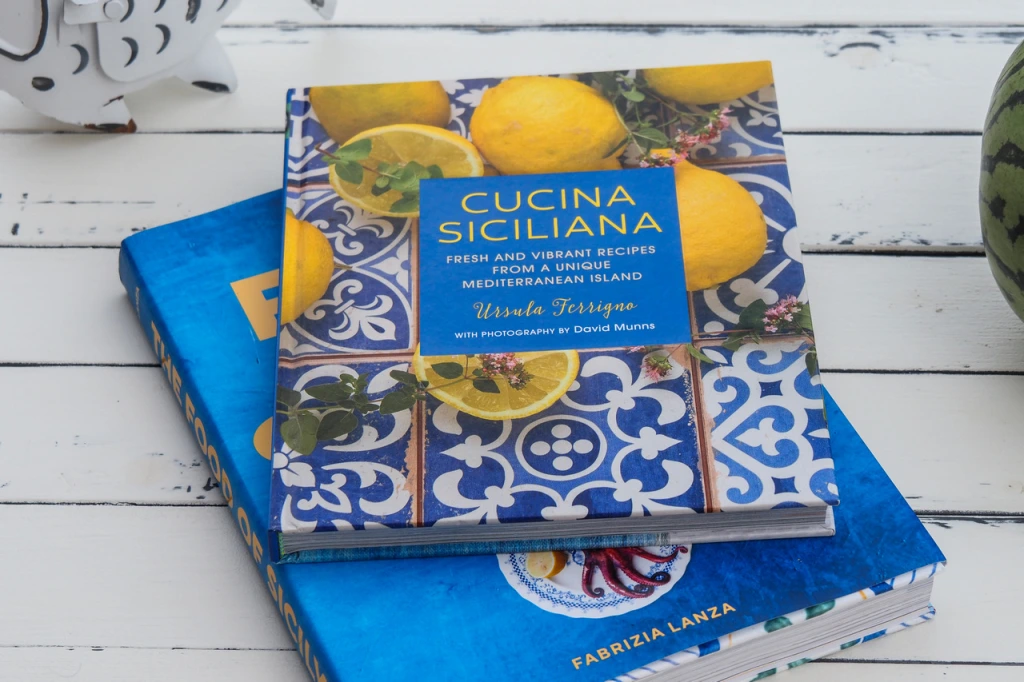
Phoenicians, Greek, Romans, Vandals, Arab, Normans, and Spanish to name just some of the historic rulers, all left their mark on the island. Which is particularly true when it comes to Sicily’s culinary history, which is second to none. They all brought with them ingredients from their homelands, which they also started to cultivate on the island. Thus, it’s no surprise that many of Sicily’s most iconic dishes use a range of ingredients you will not very often see in other parts of Italy.
What to eat in Sicily
If you are planning a trip to Sicily, make sure to try the island’s most iconic foods. From street food to antipasti, primo (first course), secondo (main course), and dessert, below I have listed twenty of the most iconic Sicilian dishes you must try the next time visiting.
Arancini
Translating into ‘little oranges’, it is literally impossible not to run into these little delicacies. Typically enjoyed as a snack between meals during the day or antipasto, these little deep-fried balls consist of risotto stuffed with basically anything, from ragù to the classic ham, cheese and béchamel filling, vegetables, mushrooms, or seafood.
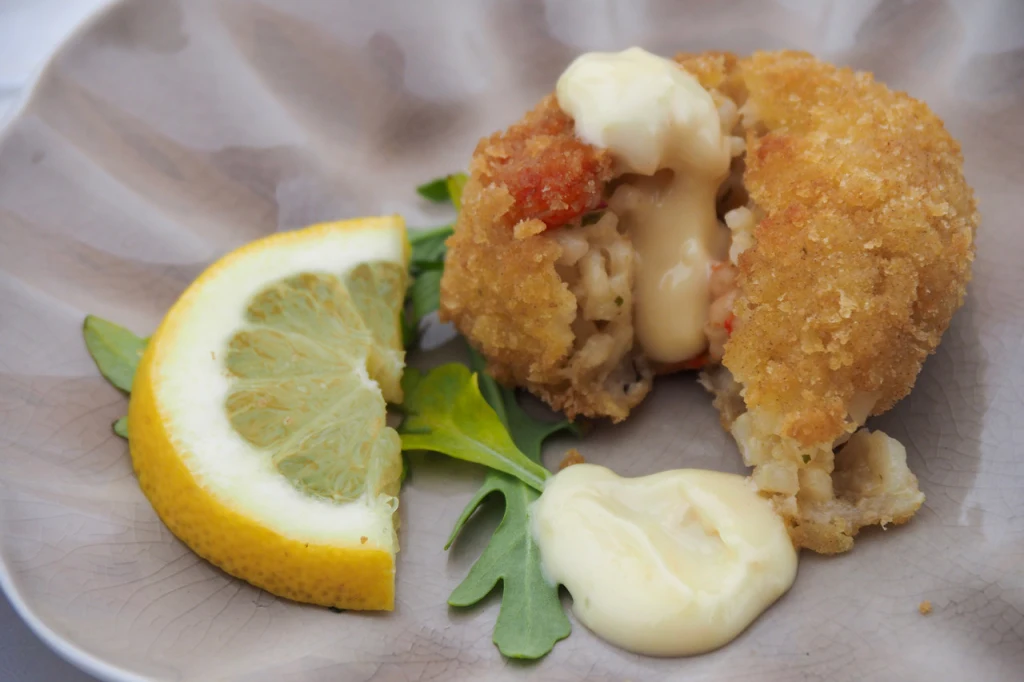
Depending on where you are in Sicily, you will different versions. In the area of Palermo, they will be shaped in round little balls and will be called arancine. Head to Catania, and they will be called arancini and shaped like cones.
Like most traditional dishes, arancini are a heritage of the islands many conquistadores, in this particular case to the 10th century under Moorish rules.
Go ahead and give it a try making them at home with this recipe: Crab Arancini with homemade mango mayonnaise. It’s easier than you might think.
Panelle
Fried chickpea fritters are among the most popular street foods across Sicily. Made from deep-fried chickpea flour, water, salt, pepper, olive oil, and finely chopped parsley, panelle are usually served stuffed inside a soft bread roll seasoned with salt.
Caponata
This eggplant based vegetarian dish served in an agrodolce sauce is one of the most popular antipasti across Sicily while sometimes also served as a side to fish or meat and is basically a cooked salad.
Fried eggplant is the star, but caponata combines a range of different vegetables such as tomatoes, celery, capers, red bell peppers, and green and black olives. Each vegetable is prepared separately, making this a time-consuming dish to prepare but the tangy, salty, and lightly sweet flavours and silky texture is worth any minute dedicated to its preparation. Albeit it’s much easier to enjoy at your next trip to Sicily, as someone else will do the work for you.
Caponata is served either warm or at room temperature.
Tarongia (Sicilian Flatbread)
You won’t have any difficulty to order pizza while in Sicily. But while you on the island, make a point trying the historic Tarongia.
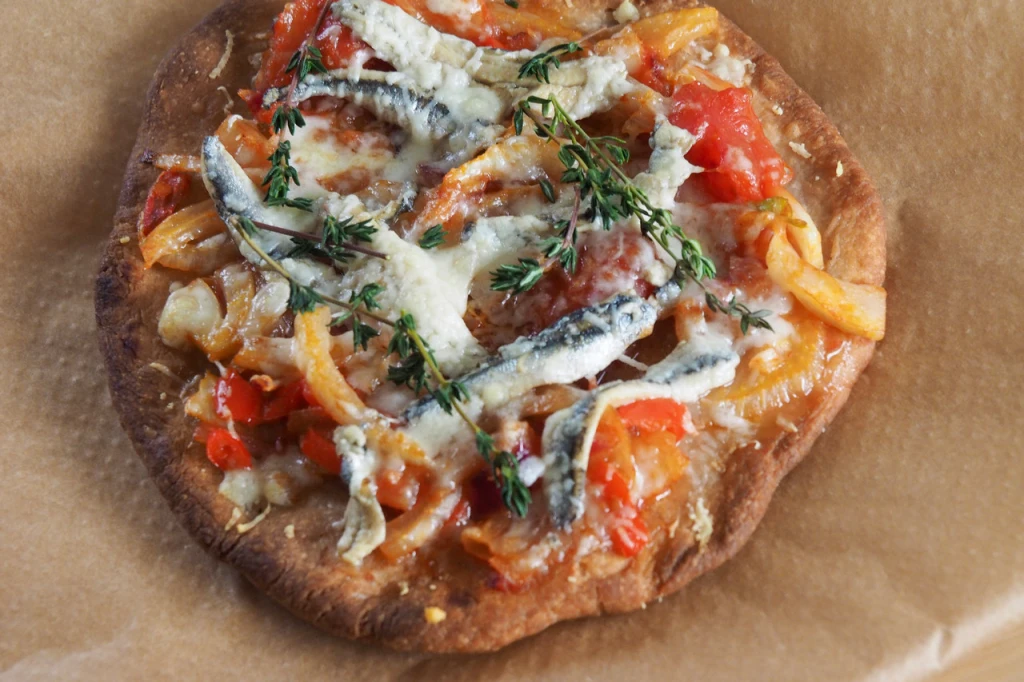
This is a unique type of flatbread first deep-fried and then grilled to create a particularly crisp bread. It is topped with a mixture of tomato, wild fennel and anchovies which gives the bread a unique sweet-sour flavour.
Though it needs some trying to get it right, try this recipe to make this unique Sicilian flatbread at home.
Gambari Rossi (Red Prawns)
Different to other types of prawns which only take on a reddish colour when cooked, these naturally coral red prawns are traditionally eaten raw, with nothing than a drizzle of olive oil and a light squeeze of lemon.
They are the perfect antipasto or enjoyed as a snack in between.
Fritto Misto di Mare (Mixed fried Seafood)
Though restaurants today offer a wide range of fish and seafood on their menus, looking at historic Sicilian dishes, not many are predominantly fish or seafood dishes.
One of the most iconic fish dishes originating from Sicily is certainly the well-known fritto misto di mare, deep-fired mixed seafood. Locally, it is typically eaten as antipasto or primo.
As many dishes, fritto misto origins in ancient times when any food was too precious to be wasted. Thus, fritto misto consisted of the unwanted catch of the day, typically small seafood and fishes such as shrimp, cuttlefish, squid, and sardines which had ended up in the fisherman’s nets while fishing for larger, more precious fish.
Today, it is a popular dish across Sicily and found at all other coastal areas of Italy as well. It is usually served with lemon wedges and enjoyed as a simple street food snack, antipasto or first course.
Sarde e Beccafico
A particular popular dish in the province of Palermo, sarde e beccafico is a simple yet very flavourful local dish. Sardines are cut open ‘al libretto’, which means the end up looking a bit like a small book. A mixture of breadcrumbs, pine nuts, raisings, sugar, cocoa, and herbs and spices is piled on top, drizzled with some lemon or orange juice, and then the sardines are rolled up, skewered and then grilled or baked.
Sarde e Beccafico are served locally either as antipasto or main course.
Swordfish
If there is one type of fish that stands for Sicily, for me it is swordfish. You will find hardly any restaurant not having it on the menu. Easy to prepare with a meaty texture and delicate flavour, the Sicilian cuisine knows many ways to prepare a delicious swordfish dish. Swordfish is served either grilled, backed or pan-fried, or thinly sliced to be eaten raw as carpaccio.
One of the most popular swordfish dishes are Involtini di Pesce Spada, swordfish rolls braised in tomato sauce.
Pasta alla Norma
A pasta dish today well-known beyond Sicily’s borders, Pasta alla Norma, is named after a famous 19th century opera. However, the dish is older than its name and it’s believed initially it simply called pasta with eggplant. It combines locally grown eggplant (deep-fried), and tomatoes (made into a delicious tomato sauce), along with ricotta salata.
Locally it is mostly served using rigatoni pasta, a short thick type of pasta with a hole in the middle is the perfect shape to scoop up the delicious, meaty-like (albeit vegetarian) pasta sauce.
Spaghetti al Nero di Seppia
If you have never tried black pasta before, your next trip to Sicily is the perfect time to go for it. The black colour is obtained from squid or cuttlefish ink, which adds a slightly salty flavour.
Like many ancient dishes, squid ink spaghetti (or pasta) emerged as a way not to waste the squid ink. Today, it is a cherished type of flavourful pasta across all of Italy though it remains more common near the southern coastlines, and off course Sicily.
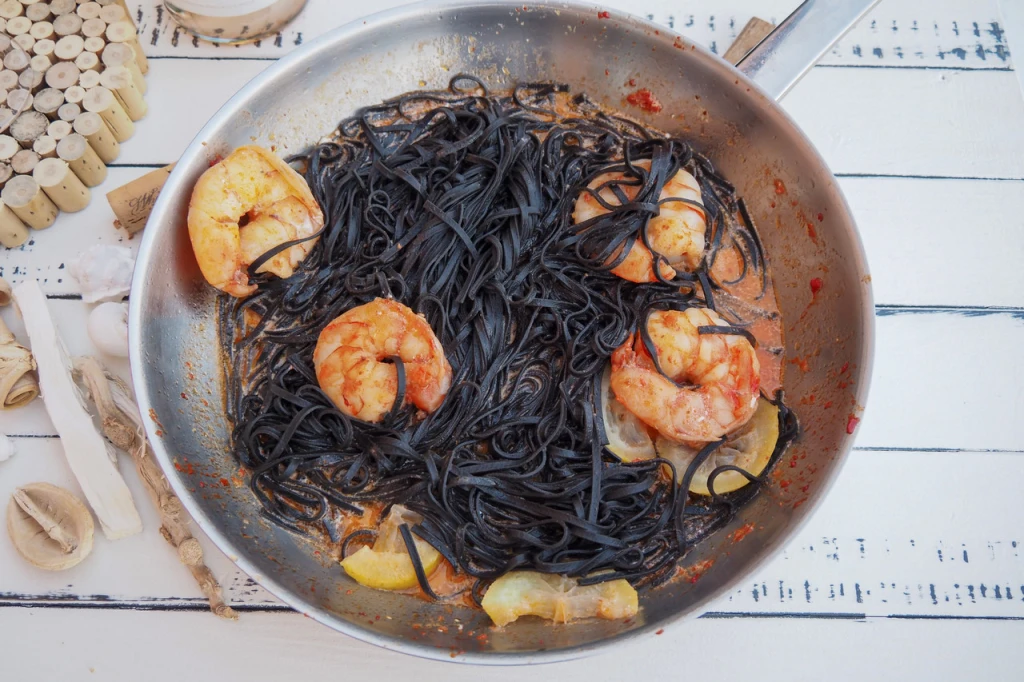
There are many different ways to prepare spaghetti al nero di seppia, though a common one is to serve it with a tomato sauce and fresh shrimp.
If you want to enjoy the dish at home, try this super delicious, easy Lemony Squid Ink Tagliatelle with shrimp recipe, which will be ready in less than 30 minutes.
Pasta con le Sarde
Pasta con le Sarde could be easily considered one of the best examples combining Italian and Arab cuisines.
The origins of the dish are a bit in the dark, but ingredients like raisings, pine nuts, and saffron are a clear testimony to the island’s Moorish heritage.

Traditionally, the dish is made with bucatini, a type of pasta similar to spaghetti albeit significantly thicker and with a hole running through the centre. Also rather uniquely, pasta con le sarde is often served at room temperature. Thus, when you order this dish in Sicily, it is not a mistake or oversight as you might think when being served a plate of ‘cold’ pasta. It will be instead intentionally.
If you want to get a taste of Sicily at home, try this recipe.
Timballo di Anelletti
This uniquely shaped pasta dish, a speciality of Palermo, consists of anelletti pasta which is a pasta rarely found in other places across Italy. Anelletti pasta is a very sturdy pasta shaped like little rings.
To create the Timballo di Anelletti, the pasta is first boild and then arranged on top of a filling of ragù, cheese, ham, and eggplant, which is baked together. The dish takes its oval-shaped form from the pan used for baking.
Timballo di anelletti is traditionally served at celebrations or family gatherings involving a larger number of people.
Couscous Alla Trapanese
Introduced by Moorish rulers, couscous remains one of the most popular dishes across Sicily.
Among the most famous versions, couscous alla Trapanese hails from the town to Trapani on the western coast of Sicily. It even has its own annual festival, the couscous festival at San Vito Lo Capo held in September. The dish is served with fresh fish caught off the coast of Trapani, tomatoes and almonds.
A more recent addition to the original couscous alla Trapanese, it is now usually served with a fish stew, adding additional flavour and texture.
Parmigiana di Melanzane
Consisting of layers of fried aubergine, tomato sauce, fresh basil, mozzarella, and grated cheese, this traditional dish offers an incredible scale of intense flavours and texture.
The dish takes its name from the word parmisciana, which means Persian in Sicilian dialect.
Citrus Risotto (Risotto algi Agrumi)
First brought to Sicily during the Middle Ages by Moorish rulers, rice had been cultivated for centuries mostly in the western part of the island. Meanwhile, Sicily is famous for growing citrus fruits. The local Femminello Santa Teresa lemons for example are said to be among the best in the world, alongside the famous Amalfi lemons. Meanwhile, a wide range of other citrus fruits including oranges, mandarins, grapefruits, and clementines, are grown on the island as well.
While lemons are a stable in Italian cuisine, the Sicilian citrus risotto uses a mix of grapefruit, orange, and lemon to create a heavenly zesty, juicy risotto.
Pollo al Limone (Lemon chicken)
Originating from the area of Ragusa, in the southeast of Sicily, pollo al limone consists of roast chicken breast braised in a creamy, zesty lemon sauce. Made from the incredible lemons grown on the island.
This is a deliciously simple dish served typically with a slice of bread to soak up the thick lemon sauce.
Cassata (or Cassata Siciliana)
Perhaps the most famous dessert of Sicily, this Masala-soaked sponge cake layered with sweet ricotta and marzipan and topped with candid fruits is another nod to the island’s Moorish heritage. What sounds rather simple is a real work of art, as it needs to be prepared layer by layer, ending with a final layer of marzipan artfully decorated with candid fruits.
Cassata used to be a popular dessert eaten during Easter, but it now it is a much cherished dessert any day of the year.
Cannoli
Another iconic dessert immediately linked to the island of Sicily. Cannoli are deep-fried pastry shells filled with sweet ricotta flavoured with orange zest or cinnamon and candid fruit and garnished with pistachios or mini chocolate chips. The shell is made with dough made of flour, wine, sugar, and cocoa. To create the tube-like shape, the dough is wrapped around a small tube (canna).
Cannoli take their name from the word cannolo (or cannolu in Sicilian dialect) which translates into ‘small tube’.
Locally, they are particularly popular during the Christmas period and the Feast of Saint Joseph. While of course sold across the whole island in pastry shops, bars and restaurants on each day of the year.
Granita
Today served all over Italy, granita has its origins in ancient times when farmers would gather snow at Mount Etna in winter, to be stored in natural mountain caves called fosse where the ice would be preserved until the next summer. It would then be packed in straw and salt and taken around the island on donkeys as a means of cold drink giving relief to the people working the land on hot days.
Meanwhile, under Arab rules the technique of freezing a mix of fruit juices, sugar, and ice emerged at some point during the 9th century. The resulting frozen mixture was initially called sherbet, which was likely derived from the name sh-r-b, which means ‘to drink’.
Over time, fruit juices were replaced by citrus, almonds, and coffee while the texture of the granita remained in place.
Granita remains one of the most popular drinks/cool snacks during the hot summer months, enjoyed in scones (much like ice cream) or sandwiched into a soft brioche bun.
Brioche con Granita or Gelato
Particularly popular during the hot summer months, when it might even double as breakfast, this is one of the simplest desserts you can find in Sicily. It consists of a soft brioche bun cut in half and stuffed with granita or ice cream.
While brioche in the northern parts of Italy refers to the classic French croissant (which by the way is called ‘cornetto’ in the south), the brioche used for Brioche con Granita/Gelato is a soft, sweetish soft pastry.